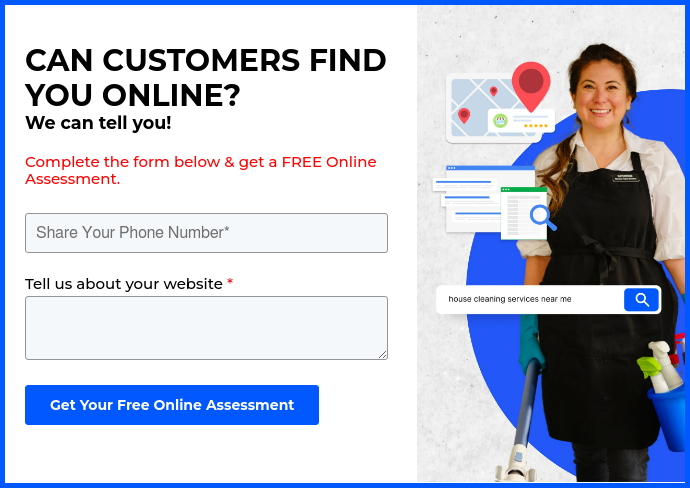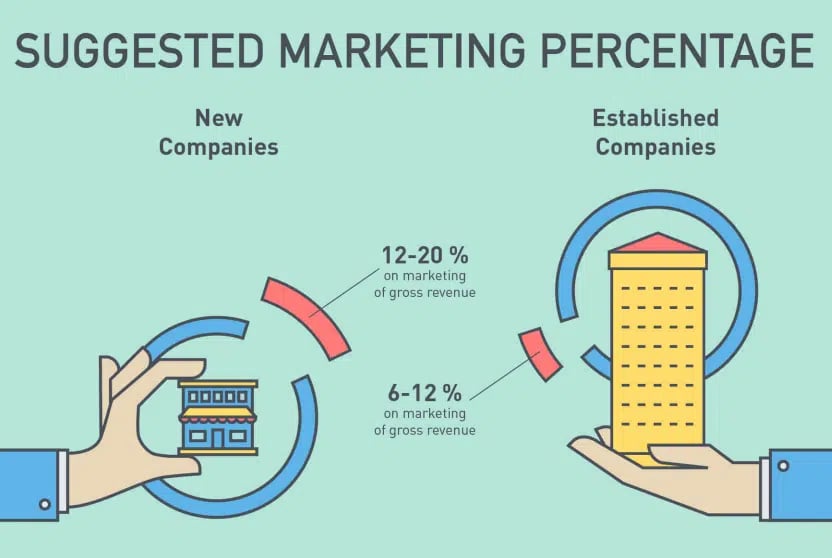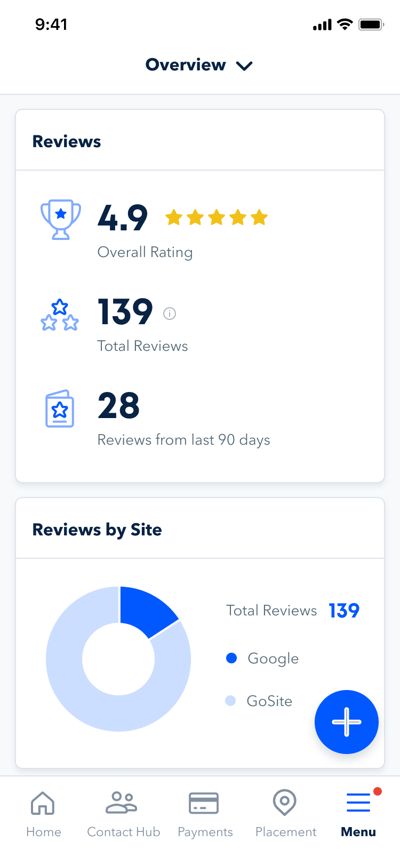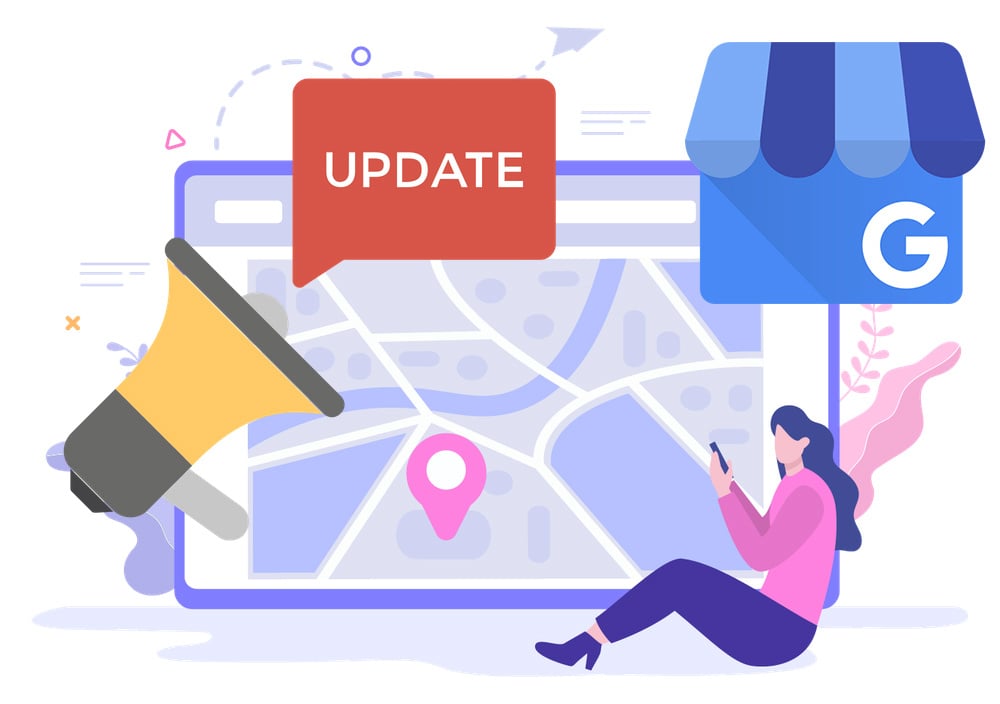How to Succeed with a Small Business Marketing Budget
Master small business marketing on a budget. Learn expert strategies to create effective campaigns and drive growth. Get started here!

Jump To...
What is a Good Small Business Marketing Budget Amount? | Can You Build Effective Marketing on No Budget? | What is Usually Included in a Small Business Marketing Budget? | What to Prioritize on a Tight Marketing Budget | Key Takeaways
With a well-planned strategy, even small businesses can attain success. The right tactics allow you to optimize your limited marketing budget and propel your business forward.

What is a Good Small Business Marketing Budget Amount?

Source: NuphorIQ
What Returns Are You Looking For?
One way to figure out how much money to spend on marketing is by looking at how much money you want to make. Here's a simple formula that you can use as a starting point:
Marketing Budget = (Desired ROI / Historical ROI) x Expected Revenue
To help you know what numbers to add in, here’s a quick guide:
- Desired ROI: This is the amount of money you want to make back from the money you spend on marketing (which should be greater than 100%). It's expressed as a percentage, which is a way of showing how much of your money you want to get back.
- Historical ROI: This is the marketing ROI you’ve achieved in the past. If you’ve not tracked your marketing spend or ROI in the past, you can make this number 100%.
- Expected Revenue: The projected revenue or sales that you expect to generate from your marketing efforts, based on your business goals and sales projections.
Imagine you have a small business that you think will make $100,000 in the next year if you do nothing different from what you've done in the past. You want to make four times more money from your marketing than what you spend on it (your ROI). But you've only made twice as much money from your previous marketing efforts.
To figure out how much money you should spend on marketing, you can use a formula. In this case, the formula would be:
Marketing Budget = (400% / 200%) x $100,000
When you solve this equation, you get a marketing budget of $200,000. This means you'll spend $200,000 on marketing to make four million dollars in return.
Remember, this formula is just a guide and might change depending on your business's unique situation or goals. It's important to keep an eye on how well your marketing is working and adjust your budget accordingly.
Can You Build Effective Marketing on No Budget?
Yes, you can market your business successfully on $0. However, if you’re not budgeting money toward your marketing, then you will most certainly be spending lots of time. And if you have a lot of time at your disposal, then getting started on no marketing budget will work for you.
That said, once you’ve generated your first big sales, you’ll want to set aside part of that revenue toward advertising and other marketing resources. Over time, you’ll need those investments in place to free your time so that you can manage your business more effectively.
What is Usually Included in a Small Business Marketing Budget?
Smart small business marketing means having a good plan and knowing what's important. Figuring out how much to spend on marketing and where to put your money is key to making your business succeed.
Advertising
Advertising is a vital component of a small business marketing budget. According to the US Small Business Administration, on average, small businesses in the United States spend $375,000 per year on advertising expenses.
This figure is, of course, dependent on factors such as industry, business size, and location. Figures from Small Business Trends indicate that, on average, small businesses tend to spend 1.08% of revenue on advertising.
Carefully selecting the most effective channels and targeting methods for your specific audience will help optimize your advertising budget and drive results.
Website
In today's digital age, having a well-designed, user-friendly, and mobile-responsive website will dramatically improve a business's online exposure.
The National Federation of Independent Businesses (NFIB) suggests that the average yearly expenditure on a small business website is between $1,000 and $3,800 for the initial outlay and $600 to $2,800 per year for maintenance and optimization.
These figures can increase in proportion to website site load and requirements. The cost includes factors such as domain registration, hosting, web design, and ongoing maintenance.
Content
Setting aside some money in your marketing budget for making and sharing content is very important for bringing in visitors to your website naturally.
According to a study by the Content Marketing Institute, small businesses spend on average $9,100 per year on content marketing. This investment can include things like blog posts, articles, email newsletters, videos, infographics, and other content formats tailored to the target audience.
Creating high-quality, informative, and engaging content helps businesses improve search engine rankings, and foster trust among customers.
Social Media Management
Businesses spend an average of 12% of their total marketing budget on social media marketing, making it a significant aspect of small business marketing. This adds up to $55,000 per year for most small businesses in the United States.
It is important to note that some of this budget may overlap with advertising expenses, as paid social media ads are usually a key part of a well-rounded social media strategy.
Search Engine Optimization (SEO)
SEO should be a critical aspect of a small business marketing budget, as it helps improve a website's visibility and organic search rankings.
Research conducted by Ahrefs indicates most small businesses spend between $500 to $5,000 per month on SEO services.
This range accounts for a variety of factors, such as the competitiveness of the industry, the size of the business, and the level of services provided by the SEO agency or consultant.
By allocating a portion of the marketing budget to SEO efforts, businesses can enhance their online presence, achieve higher search rankings, and ultimately boost sales and revenue.
Contact Nurture Streams (Email & SMS Marketing)
Contact nurture streams are often included in the content budget, as they involve creating and distributing targeted messaging to engage and nurture leads and customers.
These marketing channels allow businesses to maintain regular communication with their audience, share personalized content, and promote special offers or events.
Allocating a budget to contact nurture streams offers numerous advantages. It helps businesses forge stronger customer relationships, fosters trust and loyalty, and provides cost-effective channels with high ROI potential.
Graphics and Branding
A small business marketing budget must include spending on graphics and branding in order to build a strong visual identity and improve brand recognition.
As indicated by the U.S. Small Business Administration (SBA), the annual expenditure on graphics and branding for most small businesses in the United States ranges between $500 and $10,000.
Typically, this investment includes logo design, color palette, typography, business cards, packaging, and promotional items.
By investing money in expert graphics and branding, businesses can create a distinctive visual identity, stand out from rivals, and connect with their target audience, thus boosting the success of their overall marketing efforts.
Events
Participating in or hosting events is another aspect of a small business marketing budget that helps raise brand awareness, network with potential clients or partners, and generate leads.
Typically, US small businesses on average allocate around 24% of their marketing budget to events, or between $1,000 and $250,000 per year.
The actual expenditure on events will depend on the size and type of event, location, and extent of involvement. For small businesses, this might include participating in local trade shows, hosting webinars, organizing workshops, or sponsoring community events.
Marketing Apps and Software
Due to their ability to automate processes, track effectiveness, and streamline marketing efforts, marketing applications and software are essential components of a small business marketing budget.
SBA suggests that the average small business in the US will spend between $2,500 and $150,000 per year on marketing applications. These costs can be broken down to include app market research, testing, design, and launch costs.
The actual spending on marketing apps and software depends on the specific tools and features required, such as email marketing platforms, social media management tools, CRM systems, or marketing automation solutions.
Marketing and Sales Staff
Marketing and sales staff are an important part of a small business marketing budget, as they take control of sales and put marketing plans into action.
Payscale reports that the median salary for a marketing coordinator in the United States is about $45,000 per year, while a sales representative earns roughly $49,000 per year on average.
Typically, U.S. small businesses set aside between $70,000 and $300,000 annually for sales and marketing personnel.
These figures are averages and can vary based on location, industry, and experience. In addition to salaries, budgets may also cover sales commissions, bonuses, and other incentives.
Investing in marketing and sales professionals is essential for small businesses, as they directly contribute to revenue, implement marketing campaigns, and nurture customer relationships.
What to Prioritize on a Tight Marketing Budget
When working with a small business marketing budget, it's crucial to prioritize the most effective strategies to maximize impact and drive results.
Identifying the right priorities enables small businesses to make the most of their limited resources and focus on activities that directly contribute to growth and customer engagement.
Engage Potential Customers, Referral Partners, etc.
Walking up and talking to people costs you nothing. So whether you’ve got a small or enormous marketing budget, it never hurts you to get out and network. Networking can be a powerful tool for building relationships and generating leads.
Simple tactics, such as visiting the right neighborhoods door-to-door or attending free networking events, can help you connect with potential clients and partners.
Other examples include reaching out to local businesses for collaborations, joining industry-specific online forums, or participating in community events.
Be Easy to Find Online
By actively talking to others and making helpful connections, you can get your brand noticed without spending a lot of money. This is especially important for small businesses working with a tight marketing budget, as being easy to find online is essential for success.
One effective way to achieve this is by listing your business on online directories, such as Google My Business.
These platforms aid in boosting your internet presence and simplify the process of being found by potential clients. Finding a platform that can combine several directories and ensure consistent information on various platforms would streamline the process.
In the following video, we'll demonstrate how to find a business on Google Maps, highlighting the importance of being visible and accessible online.
Source: GoSite R&D Team
You can draw in more consumers and take advantage of the potential of a digital presence without breaking the bank by making your company simple to find online.
Create Authentic Content on Social Media
For small business budgets, you should prioritize producing genuine content for social media, as a cost-efficient and successful marketing technique.
You may establish a personal connection with your audience, encourage brand loyalty, and raise engagement levels by sharing real stories, experiences, and thoughts.
To make the most of your social media presence, focus on content that resonates with your target audience.
Share behind-the-scenes looks, demonstrate your products or services, and showcase customer testimonials while emphasizing your brand's values and unique selling points.
Offer Special Promotions
Prioritizing special promotions in your marketing budget is an effective way to attract new customers and incentivize repeat business, all without breaking the bank. Offering deals, discounts, or limited-time offers creates a sense of urgency and can drive sales while building customer loyalty.
For instance, a home cleaning service could offer discounted rates for first-time customers, a lawn care company might have seasonal packages or loyalty programs, and a local handyman may provide free consultations or discounted services for referrals.
Implementing special promotions doesn't require a massive budget, but it can have a significant impact on your small business by increasing revenue, fostering customer relationships, and creating buzz around your brand.
Ask Current Customers to Review Your Business Online
Encouraging current customers to review your business online is a cost-effective marketing strategy that can boost your online reputation and attract new customers.
You may expedite the process and more efficiently manage your internet presence by utilizing a platform that controls client evaluations and an online directory service like Google.

Source: GoSite Reviews
Allocating a portion of your small business marketing budget to implement and manage a customer review system is a smart investment.
It enables you to capitalize on your existing customer base, enhance your online visibility, and ultimately drive more sales and growth for your business.
Key Takeaways
With the right tools and prioritization, your small business can widen its market and experience sustained growth. Achieving success with a small business marketing budget is entirely possible with the right strategies and priorities:
- Be mindful of how you distribute your marketing budget, making sure to invest in essential areas such as advertising, website, content, social media, and others.
- Prioritize cost-effective approaches like engaging potential customers and referral partners through networking and being easily discoverable online through directory listings.
- Emphasize cost-effective strategies, such as networking with potential customers and referral partners and boosting online visibility through directory listings.
- Encourage current customers to review your business online and leverage platforms that manage customer reviews, and directory listing to attract new customers and save money.
%20(1)%20(1).png?width=340&name=Group%2012%20(2)%20(1)%20(1).png)



